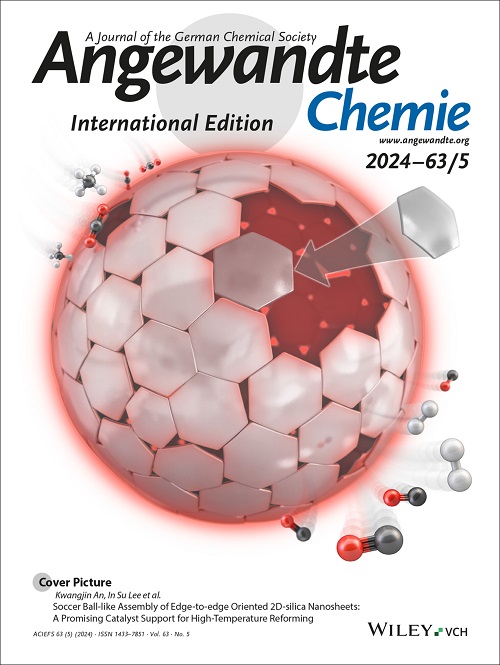Self‐Adapting Lattice Respiration Enabled by Crystal Design and d‐p Orbital Hybridization towards Highly Stable Rechargeable Aluminum Batteries
IF 16.1
1区 化学
Q1 CHEMISTRY, MULTIDISCIPLINARY
引用次数: 0
Abstract
Rechargeable aluminum batteries (RABs) are promising for large‐scale energy storage due to the appealing three‐electron transfer feature, low cost and high safety. However, the strong electrostatic interaction between Al3+ and host lattice induces severe lattice distortion and structural collapse, leading to poor cycle stability in RABs. Herein, we develop a new‐type FeWO4 cathode with a comprehensive consideration of the crystal structure and electronic structure. The three‐dimensional (3D) open framework and strong W–O covalent network of the FeWO4 greatly improve the storage of high charge density Al3+. Moreover, the d‐p orbital hybridization between the transition metal and oxygen facilitates electron delocalization, which effectively weakens the interaction with the trivalent cation (Al3+). Importantly, combining in situ characterizations and theoretical calculations, it is demonstrated that as‐prepared cathode exhibits a “self‐adapting lattice respiration” (SALR) effect. Specifically, the reversible W–O bond elongation/compression (Δd≈0.05 Å) during cycling reduces lattice strain and confines volume expansion to less than 3%. As results, the FeWO4 cathode delivers a high capacity of 192 mAh g–1 at 500 mA g–1 and long cycle life of over 2300 cycles with quiet low capacity decay of 0.01% per cycle in RABs.通过晶体设计和d - p轨道杂交实现的自适应晶格呼吸作用,可实现高度稳定的可充电铝电池
可充电铝电池(RABs)由于其诱人的三电子转移特性、低成本和高安全性,在大规模储能方面具有广阔的应用前景。然而,Al3+与基体晶格之间的强静电相互作用导致晶格严重变形和结构坍塌,导致RABs的循环稳定性较差。在此,我们开发了一种综合考虑晶体结构和电子结构的新型FeWO4阴极。FeWO4的三维开放骨架和强W-O共价网络极大地提高了高电荷密度Al3+的存储。此外,过渡金属和氧之间的d - p轨道杂化促进了电子离域,有效地削弱了与三价阳离子(Al3+)的相互作用。重要的是,结合原位表征和理论计算,证明了制备的阴极表现出“自适应晶格呼吸”(SALR)效应。具体来说,循环过程中可逆的W-O键伸长/压缩(Δd≈0.05 Å)降低了晶格应变,并将体积膨胀限制在3%以下。结果表明,FeWO4阴极在500 mA g-1时提供了192 mAh g-1的高容量,并且在RABs中具有超过2300次的长循环寿命,每循环容量衰减0.01%。
本文章由计算机程序翻译,如有差异,请以英文原文为准。
求助全文
约1分钟内获得全文
求助全文
来源期刊
CiteScore
26.60
自引率
6.60%
发文量
3549
审稿时长
1.5 months
期刊介绍:
Angewandte Chemie, a journal of the German Chemical Society (GDCh), maintains a leading position among scholarly journals in general chemistry with an impressive Impact Factor of 16.6 (2022 Journal Citation Reports, Clarivate, 2023). Published weekly in a reader-friendly format, it features new articles almost every day. Established in 1887, Angewandte Chemie is a prominent chemistry journal, offering a dynamic blend of Review-type articles, Highlights, Communications, and Research Articles on a weekly basis, making it unique in the field.

 求助内容:
求助内容: 应助结果提醒方式:
应助结果提醒方式:


